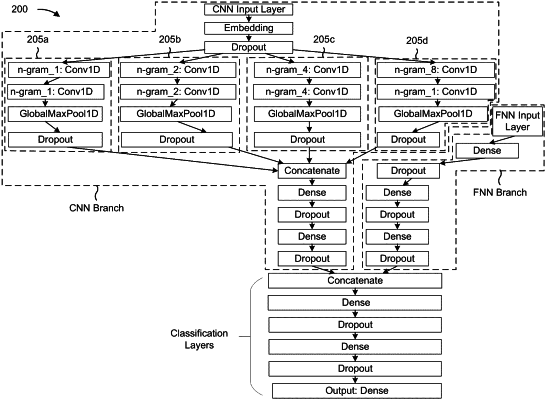| CPC G06F 21/562 (2013.01) [G06F 21/554 (2013.01); G06N 3/04 (2013.01); G06N 3/045 (2023.01); G06N 3/0464 (2023.01); G06N 3/08 (2013.01); G06F 2221/033 (2013.01)] | 20 Claims |

|
1. A system for detecting obfuscated shell scripts, the system comprising:
one or more memories; and
one or more processors, communicatively coupled to the one or more memories, configured to:
receive a shell script associated with a computing device;
generate a character frequency feature vector based on the shell script;
input, into a trained deep learning model that includes a convolutional neural network (CNN) branch and a feedforward neural network branch:
text of the shell script to the CNN branch, and
the character frequency feature vector to the feedforward neural network branch;
determine, using the trained deep learning model, a respective probability score for each of a plurality of obfuscation types for the shell script based on a combined output of the CNN branch and the feedforward neural network branch; and
detect whether the shell script is obfuscated based on the respective probability score for each of the plurality of obfuscation types determined for the shell script.
|